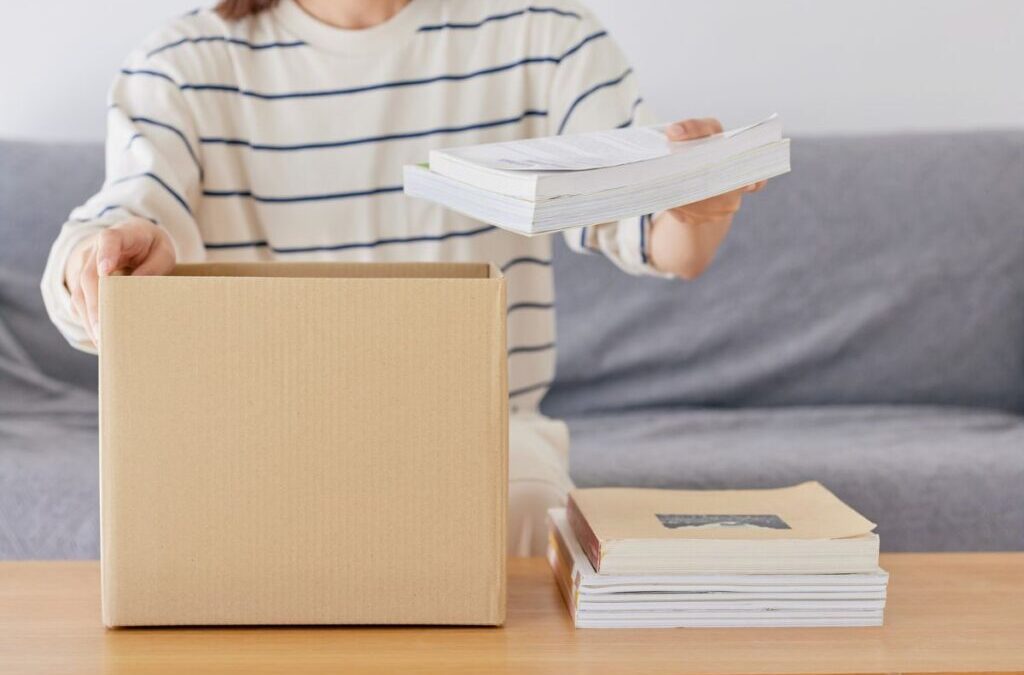Inside: Use these five decluttering rules to help you decide when it’s time to let things go.
A guest post by Cora Gold
Letting go of things isn’t always easy.
Sometimes, emotions and memories can cloud our judgment. Deep down, you know that holding onto the excess clutter isn’t beneficial, even if it has sentimental value.
If you’re ready to take a step towards creating a simplified space, follow these five rules of decluttering to help you let go of things you no longer need.
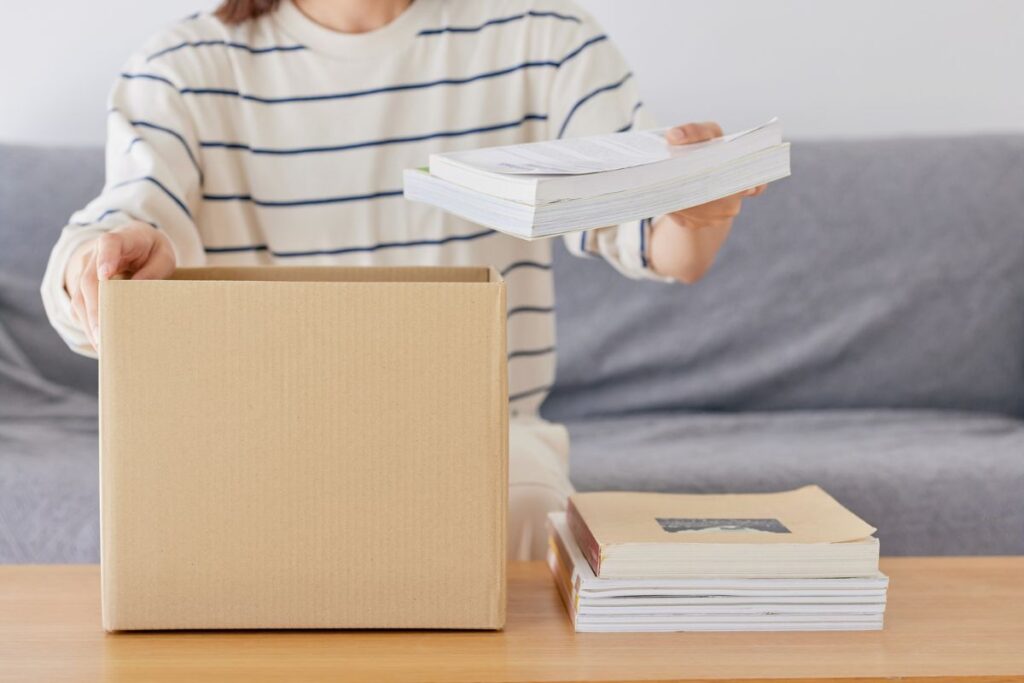
5 Decluttering Rules to Help You Decide When It’s Time to Let Go
Use these five decluttering rules to help you decide when it’s time to let go.
1. Keep What Serves You by Reviewing Yearly Use
Parting with unnecessary items creates space for what truly enhances your current life. In this sense, decluttering goes beyond organizing physical space and holds significant introspective meaning.
The process can allow you to reflect on your values and desired way of living through the items they choose to keep.
The “one-year rule” is straightforward and impactful — if you haven’t used an item in the past year, it’s time to let it go. That coat you believed you’d wear again, the gadget you tried once or the pile of old magazines all carry an unspoken burden.
Consider making decisions based on current value rather than nostalgia, as this approach can make the process easier for you.
This guideline is practical because it encompasses every season and event throughout the year. You’ll be able to determine if something genuinely fits into your everyday life.
If you can’t recall the last time you used an item, that can signal that it’s time to let it go.
While there are a few exceptions to this rule. Essentials like a fire extinguisher or first aid supplies that you hope you never have to use are important to keep on hand.
But the rule is highly effective for things like clothing, accessories, appliances, and tools. Think about the DVD player you haven’t touched since streaming became available, or the red heels that hurt your feet.

2. Determine if the Item Aligns with Your Goals and Intentions
Decluttering without a specific goal can seem like you’re merely spinning your wheels. Before diving into any sorting, pause to reflect on what you aim to accomplish through this process.
Understanding your motivation provides direction for your actions. Clear intentions can lower stress levels and enhance satisfaction in daily activities.
Jot down your objective, then formulate questions that will help guide each decision.
When it comes to clothes, for example, you can ask yourself, “How do I feel when I put this on?” Sometimes, we keep something with the hope that it will fit one day, but that can just cause us to feel worse.
If it makes you feel bad, it’s time to say goodbye. Ruthlessly declutter the clothes that don’t fit, that you don’t like, or that aren’t in good shape.
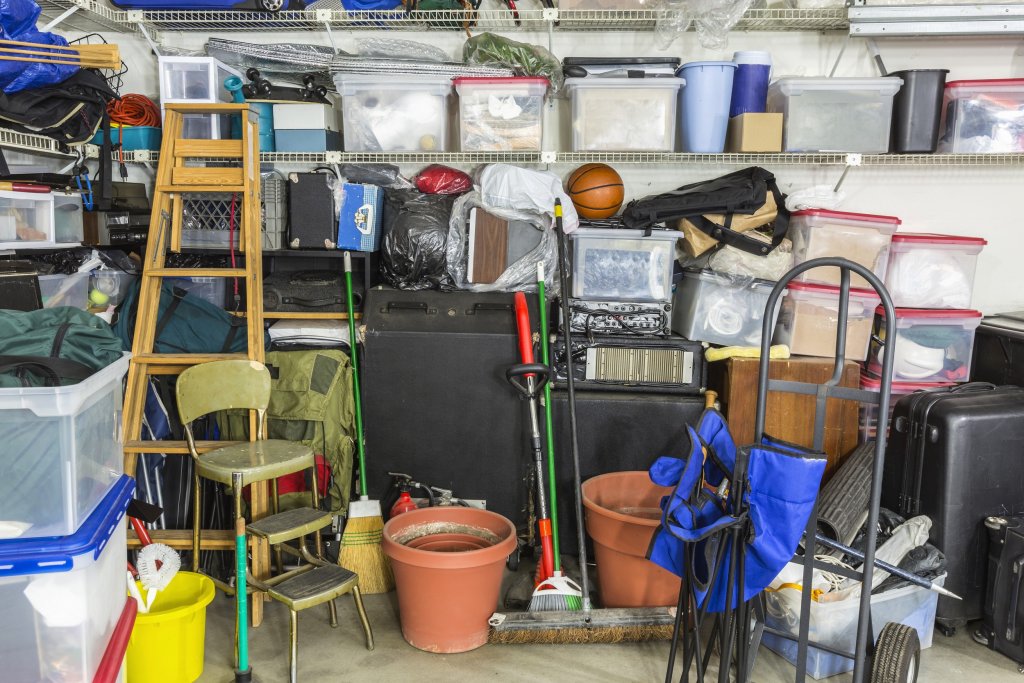
3. Avoid the “Just in Case” Mindset
Someday or “just in case” items can significantly contribute to the clutter problem. This may be why you keep backup cables, outdated chargers, or additional linens that you hardly ever use.
This mindset typically arises from a fear of needing something and not having it readily available.
Decluttering contributes to a safer home environment. Clear pathways reduce the risk of falls, and removing flammable materials minimizes fire hazards. By decluttering, you’re creating a more organized and safer space for yourself and your loved ones.
Ask yourself whether you could replace the item easily if you ever need it again. Often, the answer is yes, which means holding onto it only creates unnecessary stress.
Put those “maybe” items in a box, label it with today’s date, and store it out of sight. When you revisit it months later, you’ll realize how little you missed. That’s the freedom that comes from trusting the process rather than clinging to clutter.
An effective way to combat the “just in case” mindset is the “one in, one out” rule. Whenever you bring something new into your home, remove something else.
This simple balance keeps accumulation under control and encourages conscious consumption. Though it may feel rigid at first, it quickly becomes a habit that reinforces intentional living.
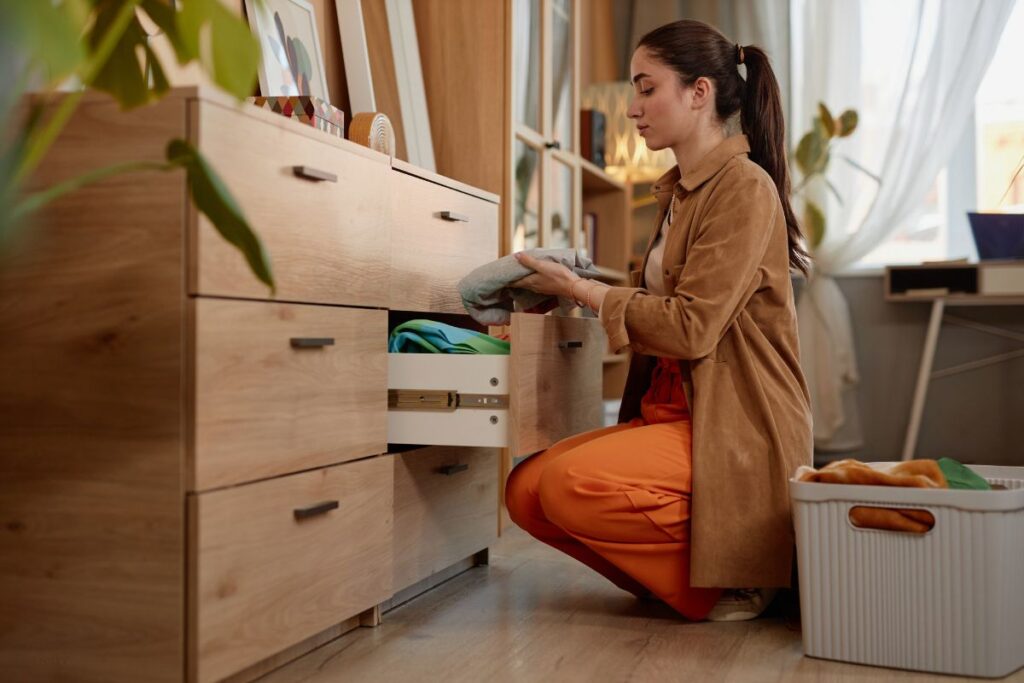
4. Focus on Progress Over Perfection
Decluttering often begins with the desire to make everything look flawless, yet this expectation can easily become frustrating.
Waiting for the perfect moment or the ideal amount of energy delays real change. The goal is to focus on progress, rather than perfection.
Start from your current situation and use the resources at your disposal. The journey becomes sustainable when it aligns with your way of life, rather than clashing with it.
Every step you take, no matter how minor, contributes to establishing a lasting sense of order and tranquility. Being “organized” doesn’t necessarily mean being “perfect.”
Some days you may feel motivated to clear an entire room, and others, you may only have the energy or time to declutter one small area. Both are valid steps that help maintain momentum.
When seen through this lens, decluttering becomes less of a task and more of a practice. Over time, you learn that absolute satisfaction comes from making steady progress and honoring your efforts.
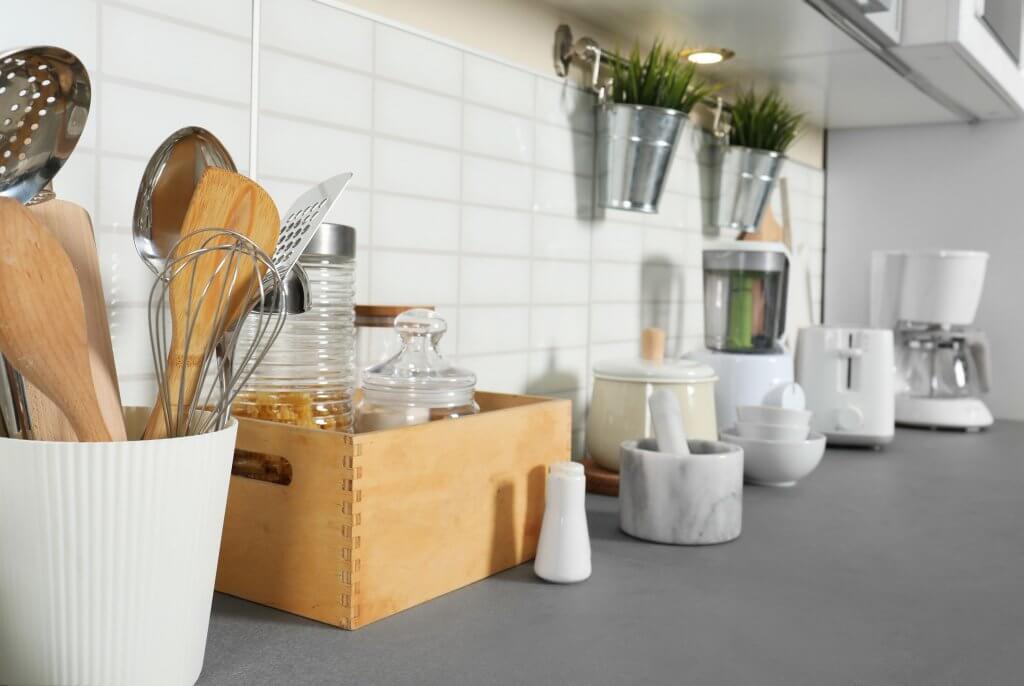
5. Would You Clean It If It Got Really Dirty?
If you’re still struggling to overcome emotional ties or “just in case” ideas, this rule can help you get serious.
Look at an item you’re on the fence about and ask yourself, “If this were dirty, would I clean it?” Imagine it’s been dropped into a mud puddle. Is it that important to you to scrub it clean, or would you be likely to throw it away?
A family heirloom or your favorite, high-quality jacket may be worth saving from hypothetical dirt. But your backup jeans or a decorative throw pillow can easily be tossed in the event of a major mess.
This rule works primarily for items that are not necessities, meaning things you would not need to replace if they got ruined. It’s for those things in the maybe pile that you keep around for no reason.
Remember, you don’t need to literally throw these things away. If they are still functional and in decent condition, be sure to responsibly donate or recycle them when possible.
Asking the right decluttering questions will help you determine if something should stay or go.

Embrace Minimalism Through Decluttering
Decluttering is more about alignment than deprivation. Each of these rules helps you decide what truly adds value to your life.
Begin with one corner, drawer, or shelf and let momentum carry you forward. Over time, decisions come faster, and clutter loses its emotional grip. What once felt overwhelming starts to feel natural.

Which of the decluttering rules to help you decide when it’s time to let go resonated most with you? Let us know in the comments below.
Sign up on the form below to get weekly decluttering tips and inspiration sent straight to your inbox. You’ll also get the free 5 Areas to Declutter in 10 Minutes Checklist to help you get started decluttering today.

